Статьи журнала - Arctic and North
Все статьи: 955
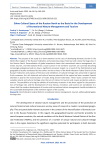
Статья научная
The purpose of the study is to draw attention to the issue of developing domestic tourism in the North-West region of the Russian Federation and preserving unique historical and cultural heritage sites in the Russian North. Generalization of global experience shows that recreational nature management, domestic tourism, and international Arctic cruise tourism in the northern countries are currently becoming increasingly widespread and can have a significant economic impact. As a result of the field historical and geographical studies conducted by the authors on the territory of the North-Western Federal District of the Russian Federation and analysis of literature and exhibitions of cultural heritage sites presented in regional Arctic museums, the rich historical and cultural tourism potential of the region has been revealed. Special attention is paid to the reconstruction of routes along ancient waterways. These routes contain the most valuable natural and cultural heritage sites that are of interest to tourism and require protection and promotion. The possibilities of using the exhibits of local history museums in the Arctic region for the preservation of heritage sites and the development of local history, recreation, and tourism are considered. It is shown that the modern development of tourism and recreational nature management should contribute to the sustainable development of the northern regions of the country.
Бесплатно
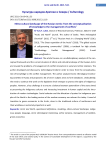
Статья научная
The article focuses on a multidisciplinary analysis of the conceptual framework and the current situation of ethnic and cultural landscape of the Russian Arctic and reveals the problems of management of conflict interaction in social and ethnic relations. The author developed and discussed a technological model in order to move from the conceptualization of knowledge to the conflict management. The author analyzed Arctic ethnological monitoring activities in Russia and proposed a list of seven subject areas to form databases. Undoubtedly, the need to continue this work on the legislative level emerges to protect the rights of indigenous peoples. However, a key challenge is to ensure a balance between paternalism of the state aimed at preserving the indigenous cultures and increasing investment in human capital and the introduction of modern technologies. Social cohesion and the allocation of quotas for indigenous peoples of the North in the leading sectors of the modern economy are relevant for today. A need of transition to green economics in the Arctic, close to the traditional culture of northerners and their worldview is extremely important as well.
Бесплатно

Ethnodemographic processes among the Sami of modern Norway
Статья научная
On the basis of statistics and comparative analysis the article shows ethnodemographic processes among the Sami of Norway in 2000–2013, including the dynamic of population, natural increase, factors and reasons which caused them in this period. The short analysis of references has been made. Stable economic situation is improving the conditions of Sami. At the modern stage, special conditions for keeping the Sami’s ethnic identity are arranged, the basis of which is the language development.
Бесплатно
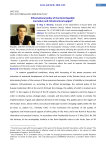
Ethnonational policy of the Komi Republic: normative and infrastructural support
Статья научная
The territory of the municipality of the city district "Vorkuta" is referred to the Arctic zone of the Russian Federation in the Komi Republic. It is not necessary to talk about some specific "Arctic" ethno-national policy in that municipality, different from the model of the national scale. Therefore, ethno-national policy is analyzed in general for the whole Republic, and then its features are revealed in the municipality "Vorkuta," which is the part of the Russian Arctic. The analysis of the list of regulating and strategic documents reflecting the specifics of the matter, together with an extensive existing infrastructure, allows to conclude about the formation of a regional model of ethnic policy in the Komi Republic. In addition, the incoordination of a number of documents is noted, as well as some inconsistencies of ethno policy to federal standards. Ethno policy in municipality "Vorkuta" is generally carried out in the framework of a regional trend. Standard maintenance includes various municipal programs and plans. The conclusion about the need to improve the conceptual foundations of the Arctic vector of ethno policy has been made.
Бесплатно
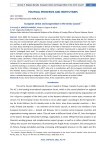
European Union and Cooperation in the Arctic Council
Статья научная
Since 2008, the European Union has unsuccessfully tried to obtain permanent observer status in the Arctic Council, the central cooperation forum in the Arctic. The analysis shows that the EU's failures in this area are connected both with its location mostly outside of the region and remoteness from the northern realities, as well as global geopolitical tensions. However, the EU has had de facto observer ad hoc status since 2013, allowing it to participate in almost all formats of interaction in the Arctic Council. Considering this fact, the permanent observer status has rather a symbolic meaning and is equivalent to joining a kind of “privileged Arctic club”. An analysis of the EU's functioning in its relations with the Arctic Council and its members shows that the EU is ready to adapt and listen to the opinion of the Arctic countries in order to become a legitimate Arctic actor. The Arctic Council is of uneven importance for the different EU member states: Denmark, Finland and Sweden are full members, several countries are permanent observers, but most EU countries are not interested in the Arctic issues. Because of this multifaceted nature, the collective EU is more of an extra-regional player on the platform, but one with serious Arctic claims. The EU is actively working on a common Arctic policy. It is represented in the Arctic Council by the Ambassador-at-Large for Arctic Affairs, introduced in 2017, who acts in coordination with the European Commission and the member states concerned. The EU's overall approach is not unsuccessful: it has managed to engage more member states on the Arctic vector, and European expertise and input on sustainable development issues is already becoming an integral part of the AC's work and promises to evolve further.
Бесплатно

Статья научная
Based on an extensive database, the authors analyzed the main features of the EU Arctic strategy and their relationship with Russian interests in the region. The authors proceed from the fact that the probability of reaching any significant points of contact between the two actors is minimal. The incompatibility of their strategic lines is because the EU considers the Arctic as another platform for its potential of “normative strength”, while Russia, in cooperation with its foreign partners, is primarily aimed at attracting investments in the development of the Arctic infrastructure. In the context of the ongoing crisis in bilateral relations caused by the events in Ukraine, it is not possible to talk about the prospects for harmonizing the regional aspirations of the EU and the Russian Federation.
Бесплатно

Статья научная
The article discusses the integrated scientific research program aimed at developing the acid deposition monitoring and geo-environmental risks evaluation in the Russian polar terrestrial and marine ecosystems in the areas of the oil and gas industrial influence.
Бесплатно

Статья научная
Russia published a series of documents from 2018 to 2022 indicating its desire to transform the Northern Sea Route (NSR) into a globally competitive international shipping route due to its awareness of the importance of the NSR for the socio-economic development of the Arctic zone of the Russian Federation. This article examines the evolution of Russian policy through a regulatory analysis combined with an empirical analysis of shipping along the NSR over the period 2018-2022, as well as the impact of Western sanctions. The aim of the article is to examine the viability of Russia’s new infrastructure plan for the NSR, published in August 2022. The analysis of Russia’s policy towards the NSR suggests that Russia needs to review its policy in relation to the imposed Western sanctions. This would entail a new focus on revitalising the shipbuilding industry. The targets set earlier, and then in 2022, for shipping cargo on the NSR should be redefined taking into account current realities. The practical significance of the article is in its use by policymakers engaged in the development of the NSR and researchers of Arctic shipping.
Бесплатно
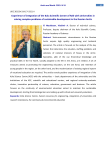
Статья научная
Socio-‐economic circumstances in the Russian Arctic require high quality engineering and technical personnel. The article is focused on the analysis of the key factors that determine the situation, staffing problems and solutions of national interests of Russia in the Arctic. Specialists, able of the use theoretical knowledge and practical skills in the Far North, socially adapted to the life in the Arctic, are needed. A set of measures aimed at promoting the engineering education, on the one hand, and retention of young people in the region, on the other hand, and the modernization of existing regional system of vocational education are required. The article reveals positive experience of integration of the Kola Science Centre (KSC) with the universities — basic departments of the universities and the institutions of the KSC, scientific and educational centers, and regional university-‐academic cluster, innovative partnership of science, education, government and business. The article focuses on the continuity of environmental education aimed to maintain the sustainable development, starting from kindergartens and ending up with school and university education.
Бесплатно
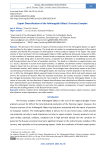
Export Diversification of the Arkhangelsk Oblast’s Forestry Complex
Статья научная
The decrease in the volume of exports of forest products from the Arkhangelsk Oblast is a significant problem for the region’s economy. This study aims to conduct a comprehensive analysis of the current situation and identify the prospects for development of forest products exports in the region. The export volume of forest products from the Arkhangelsk Oblast in 2023 significantly decreased compared to 2021. In the conditions of sanctions pressure, Russian forestry enterprises have to look for alternative markets. Despite the steps being taken to diversify exports, companies face difficulties in establishing business ties with foreign partners due to fears of secondary sanctions. This leads to a reduction in supply volumes and, as a result, a decrease in income from export activities. In addition, the domestic market is experiencing a negative impact due to a decrease in exports. Reduced external demand for wood creates an oversupply in the domestic market, which leads to a drop in prices. Such changes have a destructive impact on the financial well-being of enterprises in the Arkhangelsk Oblast, the economy of which depends on the forestry sector. In 2021, the Arkhangelsk Oblast exported timber to Asia, Europe, Africa, North and South America and even to the countries of Oceania. After the sanctions restrictions, the country structure of timber exports has changed dramatically. China became the main importer of timber from the Arkhangelsk Oblast. In the course of the study, the key directions of export diversification were identified and effective measures for their implementation were developed. Diversification of production and development of new markets will allow the Arkhangelsk forestry complex to overcome the negative consequences of export specialization and keep the leading positions in the Russian forestry sector.
Бесплатно
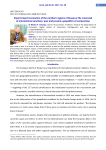
Статья научная
In this article, the author discussed historical prerequisites for the inclusion of the North in the world economy and analyzed the participation of the Arctic territories of the Russian Federation in international trade 2000–2016. The impact of the Western sanctions and their influence on the dynamics and structure of foreign trade is also in a focus of the present article as well as the political economy provisions that allow overcoming the negative nature of international economic relations between the Russian Federation and Western countries. The author proves the expediency of changing the geopolitical positions of the West and Russia with a view to moving towards a compromise model of economic cooperation between the North of Russia and the EU and other countries.
Бесплатно
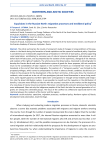
Expulsions in the Russian North: migration processes and neoliberal policy
Статья научная
The article summarizes the results of a long-term study of changes in living conditions of the population in the North during the formation of trade capitalism and the spread of neoliberal policy. Expulsion is considered as an institutionally organized way of exception in the form of state policy, actively supporting social polarization, contributing to consumer way of natural resource development and extensive use of before-built infrastructure, and accompanied by the isolation of the experience, disregard of the interests and violation of the rights of residents. The article proves that Soviet policy, interested in attracting labor to develop the Russian North and used a distribution system of goods for these purposes, did not contribute much to the consolidation of labor migrants in the northern territories as it initiated their return to the homeland at the end of their labor biography. The position of a "temporary worker" was formed by the proposed privileges, which served a compensation for work in adverse climatic conditions but did not contribute to the prospects for the development of the northern territories. At the same time, the interests of residents, who turned out to be cut off from prestigious jobs and found themselves in worse living conditions, were regularly ignored, and their rights were unrecognized. If, through vertical mobility and integration into the Soviet distribution system, it was possible to smooth out the inequities in the distribution of benefits, it became more difficult to hide this with the country's transition to the market and the beginning of a new phase of natural resource extraction. Moreover, considering the exclusion processes have become more widespread. Now not only the indigenous peoples of the North but also the second generation of migrants are among the vulnerable groups. The focus of the conflict has shifted and expressed itself in the relations between the residents of the Center and the regions.
Бесплатно
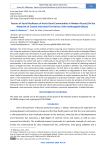
Статья научная
The article focuses on the problem of factors ensuring social resilience of Arctic rural communities. Using the materials of island and coastal territories of the Primorskiy district of the Arkhangelsk Oblast, the author studies how the features of social organization and life activities of specific communities ensure their reproduction as local social systems, help them to remain resilient to external challenges of economic, environmental and other types, and allow them to adapt to the changes in the region. In order to solve these problems, the author took part in a field study on the territory of 14 rural settlements in three rural municipalities in the period from July to early September 2022. The main method of obtaining empirical data is in-depth interview. The analysis of the interviews made it possible to identify a set of key factors of resilience of the rural communities under consideration. The first factor is the ability of local residents to reorient to subsistence farming and traditional crafts in the conditions of degradation of those sectors of the local economy that imply permanent formal labor employment. The second factor is the high level of social capital of communities, which determines the normalization of mutual assistance practices. The third factor is the involvement of a part of the local population in grassroots activities: social and cultural initiatives of local residents make it possible to attract external resources to solve the problems of territorial development, as well as support the collective identity of rural community members and increase its cohesion. The fourth factor is the return of retired local natives who previously migrated from rural to urban areas.
Бесплатно

Family values and social education of young parents in the modern society
Статья научная
The article raises the question of the transformation of family values in the society at risk. The approaches to the understanding of family values. Focused on the field of parenting as the most promising area of family and society. Formulated the need for the social education of the family as a mechanism for the internal reorientation of values of the modern society.
Бесплатно
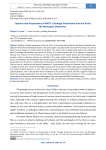
Features and Perspectives of NATO`s Strategic Penetration into the Arctic: The Norwegian Dimension
Статья научная
Military-strategic penetration into the Arctic is becoming one of the key attributes of global capability for influential international players. The point applies not only to the most powerful states, but also to NATO as main keeper of military tools of the West. The article tries to identify and explore the scheme of NATO`s strategic penetration into the Arctic Ocean. It is noted that the role of its support is assigned to Norway, the reasons for the consensus on this issue between the United States and the leading NATO member states in Western Europe are identified. The paper assesses the strengths of Norway’s armed forces and identifies the bottlenecks that require support from NATO partners as they attempt multilateral penetration into the Arctic. Functionally, the Alliance’s anchoring scheme consists of three main elements. The first one is a section of the Russian Federation’s “containment” system in Finnmark. Here, the key role is assigned to the main forces of Norwegian troops with the practice of their operational reinforcement by the troops of NATO partners. In turn, the latter are ready to take an increased load in strengthening the second element. This is the coastline from Trondheim in the south to Tromsø, with the support of bases on which the strategic penetration into the Arctic Ocean (the third element) is carried out. This is ensured by the growing co-operation between the Norwegian Navy and interested NATO member states.
Бесплатно
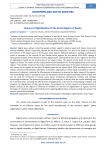
Features of Digitalization of the Arctic Regions of Russia
Статья научная
Digital space allows connecting people without regard to physical space and makes many social services available, which is especially relevant for the Arctic territories. The aim of the study is to analyze the features of the digital space of the Russian Arctic regions. Research objectives: building a database of series of variables in the context of the Russian Arctic regions for the period 2014-2020, making a retrospective analysis of the dynamics of their digitalization, ranking the Russian Arctic regions by the level of digitalization based on the construction of an integral index. The objects of the study are nine Arctic regions of Russia. The results of the study provide recommendations for further digitalization of the Arctic regions. The scientific novelty of the study is determined by the application of the index method for ranking the Russian Arctic regions by the level of digitalization for the period 2014-2020 according to four sub-indices: activities of households, population, authorities, organizations, which made it possible to trace the dynamics of indicators, evaluate the effectiveness of measures to develop the digital space of the regions. The methodology makes it possible to carry out calculations based on publicly available statistical data and can be used for territories of various levels when conducting retrospective analysis and strategic forecasting procedures. The practical significance of the study lies in the fact that the results obtained may be in demand when assessing the effectiveness of digitalization in the course of developing strategies and programs for digitalization of the regional space. The prospects for further research are determined by a deeper analysis of the degree of influence of variables on the level of digitalization of regions and the formation of proposals and recommendations for adapting digitalization processes, taking into account the current international situation.
Бесплатно
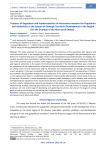
Статья научная
The study examines the issues of organizing the interaction of the population with regional and municipal authorities in the strategic planning system. The research investigates the methodological foundations for implementing tools to engage citizens in the development and implementation of strategic documents, presents their classification, and describes the specifics of regulatory control in Russian practice. As part of the practical study, an analysis of the regulation and implementation of public interaction with local and regional authorities in the system of territorial development of the Murmansk Oblast was carried out, an assessment of the implementation of formal and informal methods of public participation in the system of solving issues of local importance and the formation and implementation of strategic planning documents was given. It has been concluded that, despite the positive assessment of the experience of interaction between the population and government authorities in the system of strategic territorial development at the regional level, there is considerable potential for improving the effectiveness of such tools at the municipal level. At present, it seems appropriate to optimize public discussions, public debates, and surveys by strengthening the regulation of the requirements for their conduct and regulating the procedure for recording their results, implementing collective participation of the population in the processes of developing and implementing strategic planning documents at the municipal level, involving citizens in strategic planning processes not only at the stage of developing and approving documents, but also at the stages of setting goals, as well as monitoring and controlling their implementation.
Бесплатно
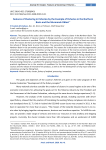
Статья научная
The purpose of the study is the rationale for creating a fisheries cluster in the Northern Basin. The analysis of the creation of classical clusters in foreign countries is carried out, information on the limited use of these structures is provided. The stages of clusterization of the fishing industry in Russia are considered. The reasons for the lack of implementation of numerous cluster projects are clarified. The main one is the refusal of fishing fleets to enter the cluster. The successful functioning of the fishery complex in the Northern Basin in the pre-market period is presented. The reasons for its destruction and the stagnation of enterprises and organizations' economies serving the main structures of the marine economic activity of fishing fleets are clarified. They are caused by a change in the structure of mining fleets, the development of uncontrolled export of fish products directly from the sea, with the departure of fishing vessels for repairs and maintenance to foreign ports. The practicality of creating a local fish cluster, the core of which will consist of fishing vessels with an incomplete cycle of processing aquatic biological resources and coastal fish processing enterprises, is justified. The proposed measures stimulate entry into the cluster. The study's practical significance lies in the creation of conditions for the deep processing of aquatic biological resources and the release of innovative fish products, as well as for the development of ship repair and other enterprises serving the fishing fleet.
Бесплатно
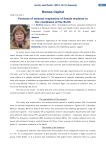
Features of external respiration of female students in the conditions of the North
Статья научная
The respiratory apparatus of the female students have been studied. A small voltage functional capacity of respiratory apparatus is found.
Бесплатно
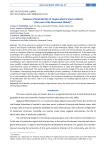
Features of local identity of single-industry town residents (the case of the Murmansk oblast)
Статья научная
The article presents an analysis of the local identity of single-industry town residents in the Arctic zone of the Russian Federation (AZRF) in the case of the Murmansk Oblast, which has half the single-industry towns of the Arctic zone. Considering local identity as a part of territorial identity, the authors present it as a symbolic space for creating and strengthening the sense of territorial identity. At the same time, according to the authors, the people's identification related to the area of residence contributes to the construction of an effective system of regional interaction. It is one of the critical factors for the sustainable development of territories. According to the results of the study, positive and negative factors of identity manifestation were obtained from the residents of single-industry towns of the surveyed area (questionnaire (n=428), in-depth interviews (n=12)); the assessment of connection with the place of residence and socioeconomic status of residents, the degree of attractiveness of cities and migration attitudes of the population were determined. The authors argue that the socioeconomic image of the area in the minds of its residents is developing along with the manifestation of their rootedness. A distinctive feature of the local identity of single-industry town residents in the Murmansk Oblast is well-being. It determines the visibility of communication with the place of residence. The increase in prosperity is proportional to the growth of identification with the town, and it is of strategic importance for building regional policies in single-industry towns.
Бесплатно

